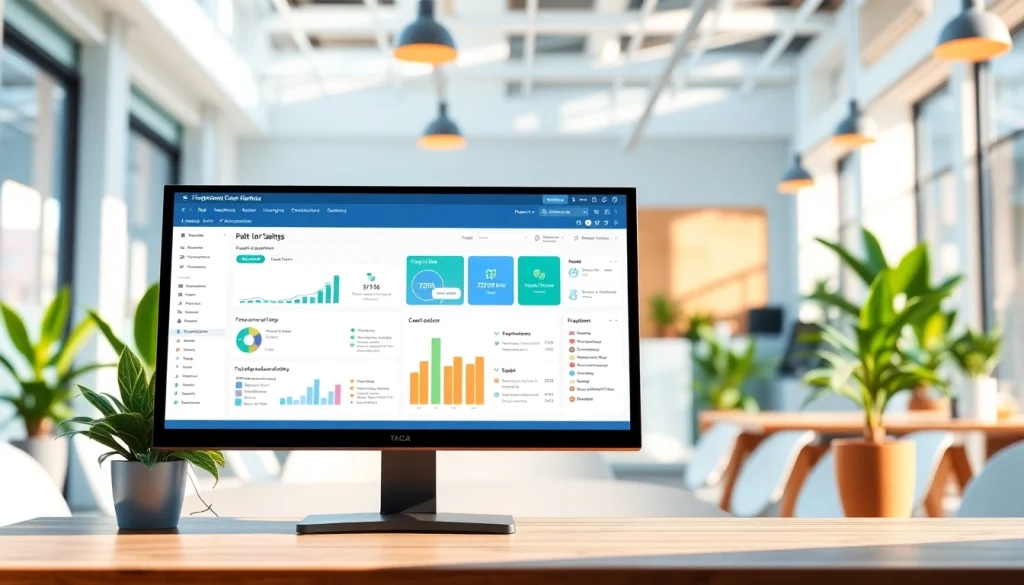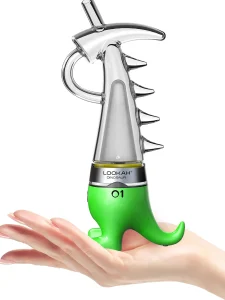Mastering Project Management with Taiga: A Comprehensive Guide

Understanding Taiga and Its Core Features
In the realm of project management, Taiga stands out as a robust and adaptable solution for developers, designers, and startup teams. This free and open-source project management system seamlessly integrates various functionalities tailored for agile methodologies. Whether you’re looking to manage tasks efficiently or engage your team more collaboratively, Taiga offers a variety of tools to facilitate an agile workflow.
Overview of Taiga Functionality
Taiga caters to diverse project management needs with a user-friendly interface that’s designed for ease of use. Its core functionalities include task and project tracking, sprint management, and a customizable Kanban board. With support for multiple project types, Taiga allows users to adapt its workflow based on their specific requirements. Additionally, the software is optimized for cross-platform usability, making it accessible for teams of any size.
Key Features for Agile Project Management
The features that set Taiga apart in the agile project management space encompass:
- Backlogs and Sprints: Users can create and manage product backlogs, plan sprints, and track their progress through burn-down charts.
- Issue Tracking: Robust issue tracking ensures that all team members can identify, report, and resolve bugs and tasks efficiently.
- Customizable Dashboards: Taiga allows users to create dashboards tailored to their workflow, displaying critical metrics and project health indicators.
- Documentation Integration: Users can attach documents directly to tasks, enabling better collaboration and information sharing among teams.
- Community and Support: Being an open-source platform, Taiga benefits from a vibrant community that contributes to its development and offers support through various forums.
Setting Up Your First Project in Taiga
Establishing a new project in Taiga is a straightforward process. Here is a step-by-step guide:
- Create an Account: Start by registering on the Taiga platform.
- Initiate a New Project: Once logged in, use the ‘Projects’ tab to create a new project, entering the necessary details like the project name and description.
- Set Up User Roles: Assign roles to team members based on their responsibilities, ensuring clarity in project ownership and accountability.
- Define Sprints and Backlogs: Organize the workflow by creating user stories, assigning tasks, and planning sprints.
- Customize Project Settings: Tailor settings such as notifications, integrations with third-party tools, and dashboard layouts to meet your team’s needs.
Comparative Analysis of Project Management Tools
Taiga vs. Traditional Project Management Tools
When evaluating Taiga alongside traditional project management tools, several differences emerge. Traditional tools often employ linear workflows, which can be stifling in dynamic environments. In contrast, Taiga’s focus on agile methodologies allows for adaptable project management. This flexibility is critical when dealing with fast-paced developments where requirements may change rapidly.
Benefits of Using Taiga in Agile Environments
Using Taiga within an agile environment presents numerous advantages, including:
- Enhanced Collaboration: With features like real-time updating and task assignments, teams can work together more effectively.
- Improved Visibility: The ability to visualize tasks and project progress ensures that everyone remains informed about the project’s current state.
- Rapid Iteration: Agile methods thrive on iterative processes and swift feedback; Taiga’s design supports this by allowing users to adjust priorities continuously.
- Cost-Effectiveness: As a free, open-source tool, Taiga helps reduce the overall budget for project management resources.
User Feedback on Taiga’s Effectiveness
User reviews highlight that Taiga’s intuitive interface and rich feature set significantly enhance productivity. Teams appreciate the ability to customize their workflows and dashboards, enabling them to tailor the tool to their unique processes. However, some users note the learning curve associated with its extensive features, emphasizing the importance of structured onboarding and training.
Implementing Taiga in Your Team
Best Practices for Team Onboarding
To ensure a smooth transition to Taiga, consider the following onboarding practices:
- Conduct Training Sessions: Organize workshops or training sessions to familiarize team members with the platform’s functionalities.
- Develop Adaptation Strategies: Encourage teams to establish their rhythms and workflows gradually, rather than expecting immediate full adoption.
- Utilize Documentation: Leverage available documentation and online resources, including community forums and tutorials, to support ongoing learning.
Customizing Taiga to Fit Your Workflow
One of the standout features of Taiga is its customizability. Here’s how to align it with your team’s workflows:
- Custom Fields: Introduce custom fields to capture information relevant to your projects, enhancing tracking and reporting capabilities.
- Task Tags: Use tags to categorize tasks according to various parameters, allowing for quick filtering and organization.
- Integrate Third-party Tools: Take advantage of Taiga’s API to create integrations with other tools, amplifying your overall project management toolbox.
Measuring Success with Taiga Metrics
To assess the effectiveness of your project management practices using Taiga, leverage its built-in metrics:
- Burn-down Charts: Monitor sprint progress through burn-down charts that illustrate task completion versus time.
- Velocity Tracking: Analyze the team’s delivery capacity over time to gauge productivity and streamline future sprints.
- Task Completion Rates: Track task completion rates to identify bottlenecks and areas for improvement.
Advanced Customization and Integration
Utilizing APIs for Enhanced Functionality
Taiga’s robust API offers advanced users the ability to integrate with other software tools and platforms. This can lead to enhanced functionality, such as:
- Automated Reports: Generate customized reports automatically, saving valuable time and promoting data-driven decisions.
- Real-time Synchronization: Integrate with communication tools like Slack to ensure project updates are relayed in real-time.
Integrating Other Tools with Taiga
Merging Taiga with other resources can optimize your workflow. Consider the following integrations:
- File Storage Services: Connect with platforms like Dropbox or Google Drive for easy access to important project documents.
- Time Tracking Applications: Utilize time tracking tools to measure how long tasks take, facilitating more informed project planning.
Building Custom Dashboards and Reports
Custom dashboards allow teams to visualize important metrics and prioritize tasks effectively. Here’s how to build actionable dashboards:
- Identify Key Performance Indicators: Determine which metrics are most useful for your team’s success.
- Select Widget Types: Choose from various widget options to best represent the data you want to track.
- Regularly Update Information: Ensure that data is up-to-date to maintain accuracy in reporting and visualization.
Future Trends in Project Management and Taiga’s Role
Evolving Practices in Agile Project Management
The landscape of project management is continuously changing, with agile methodologies gaining prevalence. Trends such as remote teamwork, increased reliance on automation, and an emphasis on data analysis are influencing how tools like Taiga develop. To remain relevant, platforms must evolve to meet these demands.
Innovative Features on the Horizon for Taiga
As Taiga continues to grow, its development roadmap may include:
- AI-Powered Insights: Incorporating artificial intelligence to provide predictive analytics and improve decision-making.
- Enhanced Mobile Capabilities: Expanding mobile functionalities to allow users to manage tasks on-the-go effectively.
- Greater Customizations: Offering deeper customization capabilities to meet the diverse needs of various industries.
The Importance of Community Feedback and Growth
The strength of Taiga lies in its active community. Engaging users will continue to guide its development. Feedback mechanisms, such as forums and surveys, play a crucial role in perfecting Taiga’s toolset. As user needs evolve, so will Taiga, ensuring it remains a pivotal resource for agile project management.







